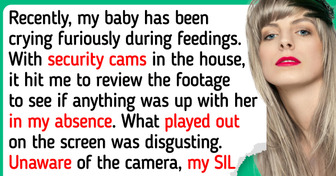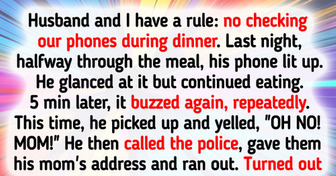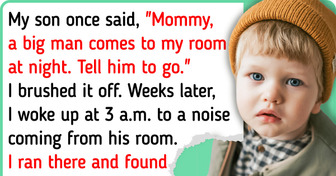16 Stories About People Who Suddenly Got Really Lucky
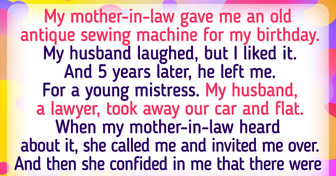
When our life is in danger, the success or failure of the outcome depends on what we do within the first few seconds. It’s extremely important to know how you are going to behave and what you are going to do at this moment. The best advice is to not panic but to act with a sense of calmness. Even if you fall down on subway tracks or find yourself in the middle of a burning forest.
We at Bright Side studied the memos from police, rescuers, and tourists and found some worthwhile tips that we would like to share with you.
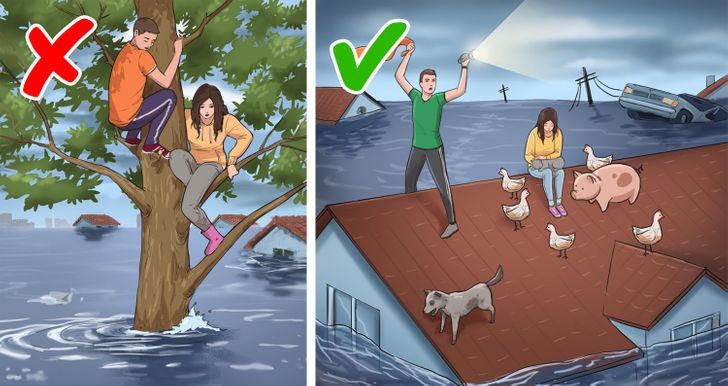
If you happen to encounter a flash flood, don’t panic. You need to quickly move to the closest higher-level ground. If that’s impossible, get to the upper floor or the attic. If you are in a detached house, not a block of apartments, lifeguards recommend getting on the roof and tying kids and elderly people to the chimney. You shouldn’t climb trees, pillars, or flimsy constructions because water can wash them away and they will fall down.
Make sure to carry some water, food, and a blanket with you. You will be able to attract the attention of lifeguards with the help of an exposed white bedsheet or a bright curtain.
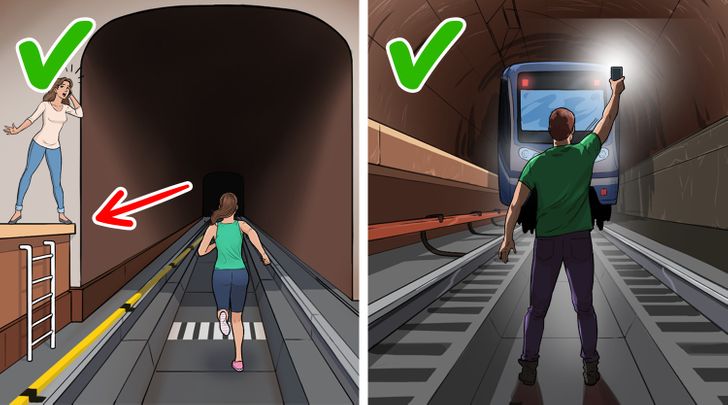
If you happen to fall down onto the subway tracks, the first thing you will instantly want to do (but it’s forbidden to do this) is to try to get back onto the platform from the side of the contact rail. A steel contact rail is a yellow metal construction along the tunnel and it electrically charged!
Here is what you should do instead: scream and ask for help to get the subway personnel to inform the train driver that there is a person on the tracks. Move in the direction opposite the one where a train will come from. Black and white stripes drawn on the ground and on the wall will help you find the point where the first passenger car stops. Attract the driver’s attention by screaming, waving your arms with the help of a phone (the phone’s screen should be on).
If the train is close, “turn on” your calm persona. Lie down between the tracks with your face down. Don’t be scared of the noise, warm air, or even sparks. Inhale and hold your breath. Then inhale-exhale-inhale again — it will help you prevent going into panic mode. Don’t change your position until you are rescued.
If you go hiking and a thunderstorm suddenly sneaks up on you, you should try to stay away from the people you are with. Yes, you do need to find a shelter but you should walk calmly while keeping a distance of 6-8 feet between each other. Look for trees that aren’t that tall with thick crowns. If you are in the mountains, start walking downhill and seek lower ground. If you are in a field, don’t hide in a haystack — lightning can strike there.
Trying to outrun a tornado is about the worst possible thing you can do in a tornado situation, take shelter. A vehicle of any kind is about the last place you want to be when a tornado comes through. When there is no available shelter around, you will have to lie or sit down on the ground. Sit down, bend your knees, put your head between your knees — this will keep you safe. In order to protect yourself from wet soil, place a plastic bag or some branches between you and the ground. All metal items (including a switched off phone) should be placed at a 15-foot distance away from you.
Before thunder strikes, the wind either stops blowing or changes direction. There is a simple way to understand how far a storm front is from you, whether it is moving toward you or whether it is bypassing you. Count the seconds between the flash of lightning and the sound of thunder. The less you are able to count, the closer the storm is. By the way, if you multiply the number of seconds by 1,000 feet, you’ll be able to figure out the approximate distance the storm is from you.
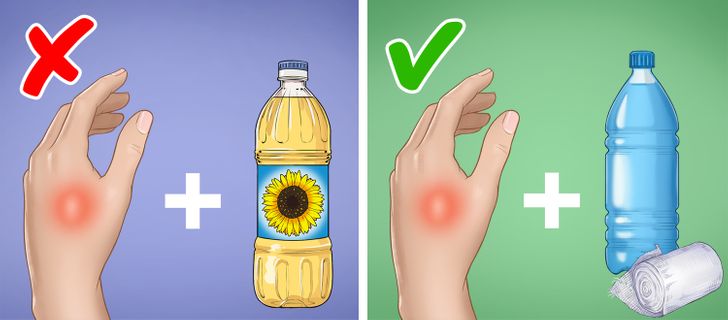
You might already know what to do if you get a burn, but we are going to remind you anyway. Don’t use any “old wives’ tale” methods: don’t apply anything on the burn and don’t spray anything on it either. You shouldn’t touch the burn with your hands and you shouldn’t tear any fabric off that is stuck to the burned area.
You should immerse the burned part of the body into clean cold water for 5-10 minutes or keep pouring water over it. Afterward, you should wrap it with a sterile bandage. It’s recommended to soak the bandage in a 2% solution of baking soda, or in alcohol. It’s necessary to drink a lot of water — tea and mineral water will work too.
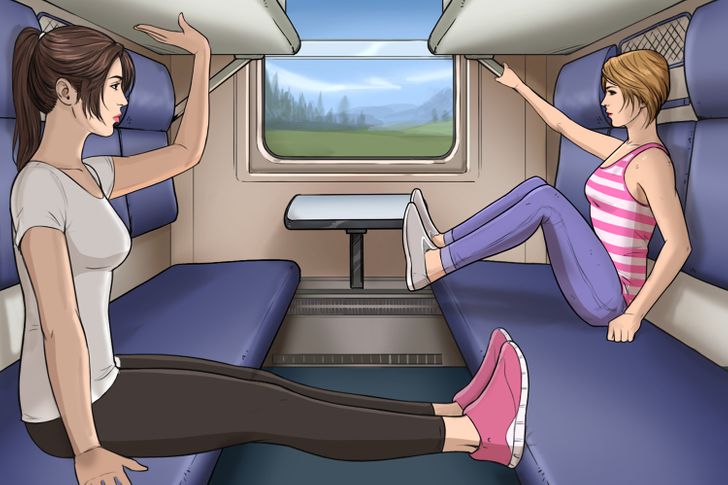
In an emergency, grab the handrails or push your feet against a wall or seat. Getting down on the floor is the safest option. Wait until the train stops completely to get back up. Don’t get up after the first hit, because it could be followed by several more strong shocks. Afterward, you should get out of the train car through the door or the window — everything depends on the situation. If you have to break the window, make sure to first close the door to protect yourself from a possible fire. Break the glass with any heavy object that you can find around you like a suitcase, a handrail, etc. Remove the glass from the window aperture and carefully jump out, preferably on the field side of the railroad track.
The wire that carries power can be located on the ground which is why your steps shouldn’t be any wider than 25 inches apart. This will help you create “plus” and “minus” between your feet. Be aware that there can also be an explosion looming. Move a safe distance away and wait for help.
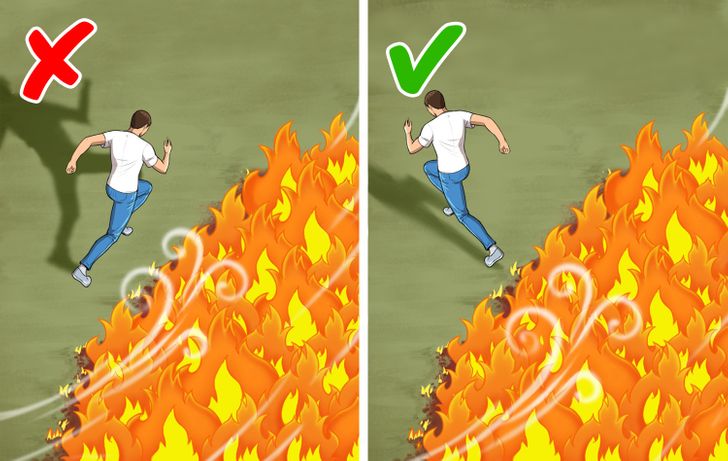
If you find yourself in a forest fire, figure out the direction of the wind and the direction the fire is spreading. Leave your dangerous location in a perpendicular fashion from the direction of the fire movement. If the wind is blowing at your back, the fire can catch up with you. If you can’t escape the fire, a body of water will increase your chances of survival. Enter the water and cover yourself with wet clothes.
If there is no water nearby, try to search for a glade or a clearing in the woods. Keep in mind that the air is less smoky in open spaces, which means you should breathe while crouching to the ground. Some memos for tourists recommend clearing the glade from branches and leaves, digging a hole, covering oneself with damp soil, and waiting there until the fire stops. If possible, make sure to inform 911 about the forest fire.
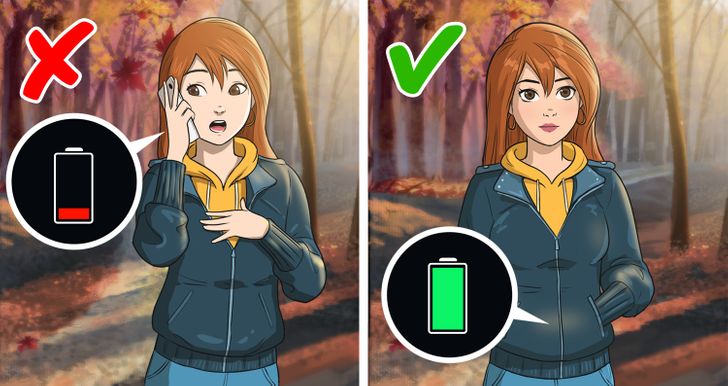
Rescuers have learned a lot about the behavior of people who are lost in the woods. Normally they “switch into” survival mode, but some people can get carried away by panic. Rescuers have classified this behavior as: “this way I guess” — it’s when a person runs around the forest, missing landmarks like paths, rivers, glades, and even roads. All of this panic results in the person leaving the deemed rescue search area. When a person panics, they might even “see” some forest creatures, UFOs, or have other hallucinations. Also, some people fail to ask for help from those who they meet on their way (because of their pride or because they think they can rely on just themselves).
Now let’s talk about the proper actions to take. Don’t panic. If you have a phone, call 911 or your loved ones. Keep your phone close to your body because the battery dies faster when exposed to cold. Look for landmarks like water, power lines, or paths. Sometimes a path can lead to a swamp, a meadow, or it might simply disappear, but it means that people use this way to do things and that the other end of the path can lead to a populated area.
Don’t mix these up with animal paths, they usually always go along under hanging branches. You can see the footsteps of animals on these paths and they might bring you to a watering hole or nowhere at all.
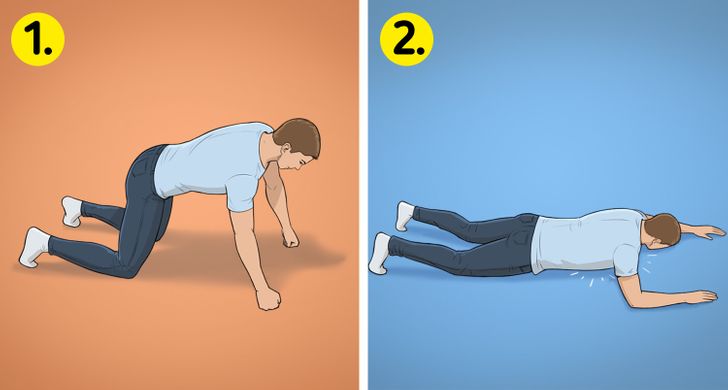
Many accidents due to choking occur because a person is embarrassed to clear their throat in public and so they run to the restroom. But this can become a fatal mistake. When a piece of food gets into the airways, it should be removed as soon as possible. Help from those around you, even if it’s just moral support, is very important. It will prevent you from panicking. For this reason, you should break a plate or turn a table upside down — your task is to draw people’s attention.
So what should one do if they find themselves choking? Generally, hits between the shoulder blades are not very effective. A natural cough and a forced exhale made after a deep and slow inhale will help push the food piece out of the throat. Firefighter and paramedic Jeff Rehman came up with a special method that consists of only 2 actions. The first one is to get on all fours, your arms should be straight and your fists should be on the floor. The second one is to sharply throw your arms forward and fall down with your chest on the floor. It will make your lungs push out the air together with the piece of food that got into your throat.
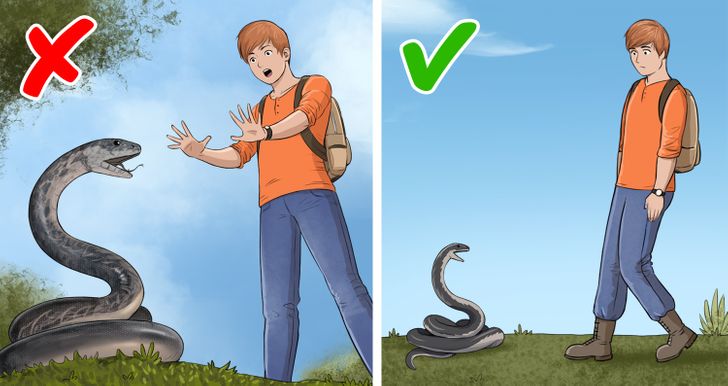
Snakes never attack first, and if they do it will only be in self-defense. At first, the snake will give a warning: the gloydius starts to shake the end of its tail, while the viper rolls up and starts to hiss intensely when it feels threatened. Snakes are scared of humans as much as humans are scared of snakes.
If you notice a snake and hear the hiss, you need to stand still and give it an opportunity to leave or just step back. If the snake has gotten into an attack pose, instantly move back and don’t make any sharp movements. Don’t try to protect yourself with your outstretched hands — it will only provoke the snake to bite you. The best thing you can do in this situation is to leave the snake alone and move away peacefully.

If you happen to find a suspicious object or a bag in a public place, don’t kick or touch it. Don’t be scared to look silly and inform the guard about the suspicious item — these people are there for these purposes too. Even if someone has simply forgotten their bag, inform an administrator — in this case, you will increase the chances of the lost item getting back to its owner.
If, nevertheless, the activation of the security forces has started, don’t show any further curiosity and just resume what you were doing before you found the bag. But don’t run because you might be mistaken for a person of interest. If there is an explosion or the sound of gunfire, fall to the floor with your hands over your head.
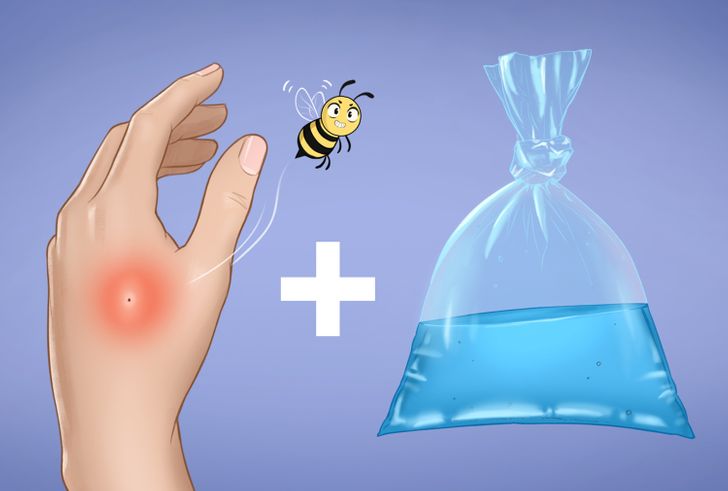
An insect bite or sting can cause swelling and even breathing problems. It’s the adrenaline that can save you from suffocation, but only doctors can inject it — in case of an emergency, you need to call an ambulance. But what do you do if the accident happens out in nature?
Ask those around you whether they have antihistamines. You need to apply something cold to the area that was stung in order to remove the swelling. Don’t use old wives’ tales like “sprinkle the bite with cold soil.” Instead, apply a plastic bag with water in it to the stung spot.
What other life-saving tips are you aware of?
Got some cool photos or stories and want to be featured on Bright Side? Send them all right HERE and right now. Meanwhile, we’re waiting!





